By Nicholas Drummond

Contents
01. Introduction
02. You wait 20 years for an 8×8 then 508 turn-up at the same time
03. UK Boxer specifications
04. Additional variants needed by the British Army
05. A high quality, low-risk acquisition
01. Introduction
The acquisition of an 8×8 multi-role wheeled armoured vehicle is one of the most important programmes in the British Army’s extensive equipment plan. Our preferred choice of vehicle, the ARTEC Boxer, will provide mechanised infantry battalions with a true expeditionary capability and in doing so will offer exceptional levels of protected mobility. If such a vehicle had been introduced as originally intended, in 2010, it would have seen service in Iraq and Afghanistan and would have undoubtedly saved lives. More than just providing enhanced survivability, Boxer will fundamentally transform how the Army operates, allowing large formations to self-deploy over long distances and arrive ready to perform a variety of mission types, from low intensity peacekeeping to high-end peer-to-peer war fighting.
02. You wait 20 years for an 8×8 then 508 turn-up at the same time
Back in 2018, I was critical of the Army selecting Boxer without a competition. I thought the absence of alternative bids would result in us paying whatever ARTEC wanted to charge us. This will not be the case. Through the UK’s previous involvement in Boxer’s development, when we were a member of the ARTEC consortium,[1]we possess a deep knowledge of the cost of every Boxer component. The DE&S Team responsible for MIV has spent the last 24 months comparing its own cost estimates with those of Rheinmetall and KMW. They’ve haggled over the cost of every last nut and bolt to ensure that the final Boxer price passes HM Treasury scrutiny. The signs are that negotiations have reached a successful conclusion, meaning that the programme is ready to advance to the next stage: production.
ARTEC also needs a pat on the back for being flexible and reasonable in agreeing to deliver what the Army needs for the budget it can afford. The UK Minister for Defence Procurement, Ann-Marie Trevelyan, is expected to green-light the programme soon, with an announcement expected before the end of 2019 and irrespective of ongoing Brexit planning. The first vehicles should start rolling off German and British production lines within 24 months of contract signature. The Army says that 66% of Boxer content will be UK sourced.[2]With the Government concerned about F-35B costs and whether the Type 31e frigate will be a credible warship, it can be sure that Boxer will deliver a world-class capability without breaking the bank. It has already been successfully deployed in combat, when the Bundeswehr sent it to Afghanistan in 2011. No German soldier was killed or injured in a Boxer. Boxer’s maturity and proven performance have allowed the UK’s Mechanised Infantry Vehicle programme to be accelerated with a timeline that is in stark contrast to the glacial processes and indecision that plagued previous quests to bring this class of vehicle into service. The head of DE&S Armoured Vehicle acquisition deserves particular credit for realising that, having spent so long trying to acquire an 8×8 capability, we didn’t need to re-invent the wheel. We begun the process to introduce an 8×8 vehicle in 1998. More than 20 years later, and after the failure of MRAV and FRES UV, Boxer is finally about to arrive and, having established itself as one of the best vehicles in its class, it will definitely be a case of third time lucky.
03. UK Boxer specifications
What makes the Boxer design unique in its class is its mission module approach. A common driveline platform can accommodate a wide variety of detachable crew compartments offering unmatched adaptability. This makes procurement easier as well as combat operations. To ensure flexibility down the road, the UK has opted for an improved Boxer driveline which allows future platform weight growth to 38.5 tonnes.[3]It uses the same MTU engine as the Ajax reconnaissance family, reducing through-life support costs through commonality of spare parts. The vehicle also has a beefed-up suspension, an electronic backbone with UK generic vehicle architecture (GVA) and other UK-centric tweaks, including blast proof seating for 95th percentile troops, a Bowman C4I fit, and the Kongsberg Protector remote weapon station (RWS). Should we decide to acquire the artillery variant of Boxer in the future, the upgraded driveline means that any Boxer within the fleet would be able to carry the heavier 155mm howitzer mission module.
All Boxers will mount either a 12.7×99 mm heavy machine gun or 7.62×51 mm medium machine gun in a RWS. It is hoped that all infantry section vehicles will have a 30×113 mm chain gun plus twin ATGM launchers. This light cannon, which is also used in the Apache AH-64 attack helicopter, combines the accuracy and rate of fire of a heavy machine gun with the explosive content of a 40 mm grenade, making it ideal for supporting infantry or defeating light vehicles at distances to 2,000 metres and beyond.
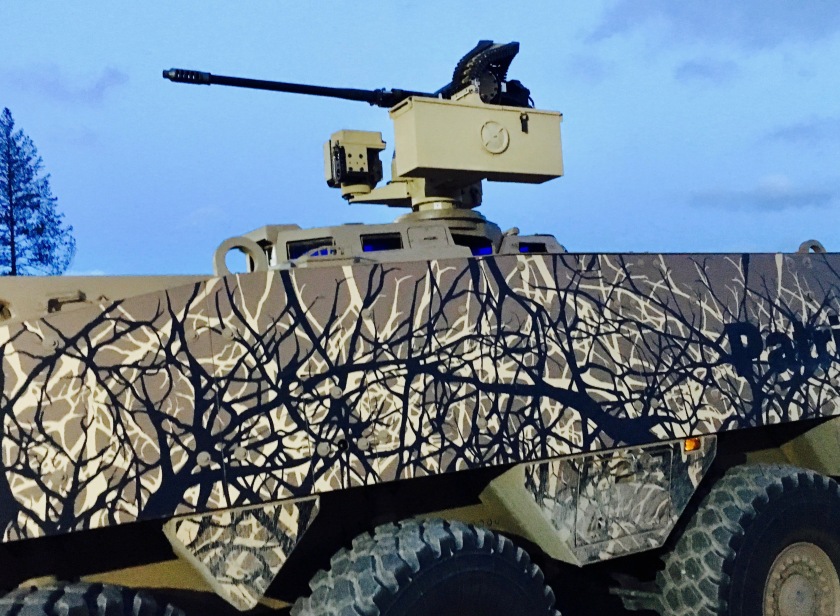
Boxer will replace our MRAP fleet, including Mastiff, Wolfhound and Ridgeback, but it will also replace the FV430 / Bulldog, which is approaching 60 years of service. Many people have praised FV432 for its longevity and utility. Having used it in BAOR in the 1980s, I can say that it has been one of the Army’s greatest armoured vehicles. Correspondingly, my knowledge of Boxer convinces me that it is a worthy replacement; although, however good it proves to be, I hope it will not stay in service for the same amount of time.
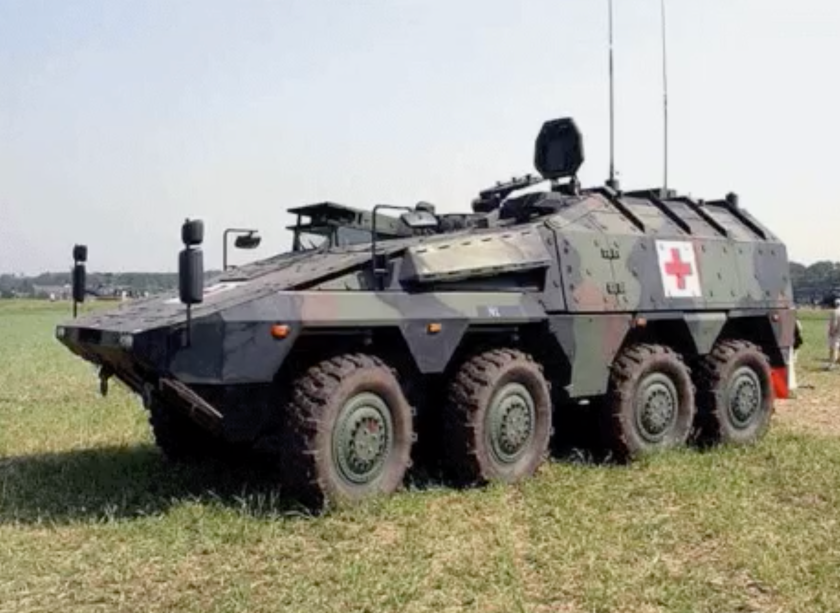
The Army plans to acquire 508 Boxers initially, spread across four variants.[4]These are: (1) Infantry Carrier Vehicle, (2) Specialist Vehicle (essentially the same as the ICV but with a re-configurable interior), (3) Command Vehicle, and (4) Ambulance. The Army presently has 893 Bulldogs, 410 Mastiffs, 164 Ridgebacks, and 124 Wolfhounds. This means it will ultimately need 1,591 Boxers to fully replace all of these legacy platforms. In fact, if Boxer is used to equip reconnaissance, artillery, engineer, signals and other units that need protected mobility, as it should be, then the final total would need to be closer to 2,000 units.
To suggest that the Army needs so many 8×8 vehicles may be a bit difficult for some people to accept, especially those brought-up on tracked APCs and IFVs. As a retired UK infantry officer with BAOR experience and someone who previously worked with Patria, an 8×8 manufacturer and competitor of Rheinmetall and KMW, my view is that 8×8 combat vehicles are the future. They have the tactical mobility to go anywhere a tracked IFV can, but they also have operational mobility, the ability deploy independently, getting to wherever they are needed without relying on transporters. This is transformational. Equipped with 8×8 Mechanised Infantry Vehicles, a whole brigade can literally get in, go anywhere and do anything. Some soldiers will need to see this to believe it, but when they do, it will drive a sea change in how the British Army fights. It will also create an insatiable demand for increased Boxer numbers and additional versions.
04. Additional variants needed by the British Army
Once Boxer is established in UK service, orders for additional variants can be be expected to follow. The Specialist variant will be used to carry dismounted 81 mm mortar teams, reconnaissance teams, mortar / artillery fire controllers, anti-tank teams, engineer recce sections and REME fitters. In time, these variants are likely to be supplemented with dedicated vehicles for each role. We can also expect Boxer to become much more than just an infantry vehicle.

The most important missing variant is a cannon-equipped fire support variant to equip wheeled reconnaissance regiments. Britain could simply follow what Germany is doing and acquire the Australian CRV in an identical configuration, which has a 30 mm cannon in a Lance 2.5 turret plus twin ATGM. The work carried out by the Australian Army to perfect this vehicle makes it a low-risk choice. Alternatively, we could fit the same CTAI 40×255 mm cannon that fires cased-telescoped ammunition in the turret being developed by Lockheed-Martin for Warrior; however, this is still under development and both cannon and turret are not yet fully mature or free of risk. Whatever we select, four infantry battalions equipped with the Boxer ICV supported by two reconnaissance regiments with Boxer CRV would give us highly credible Strike Brigades.
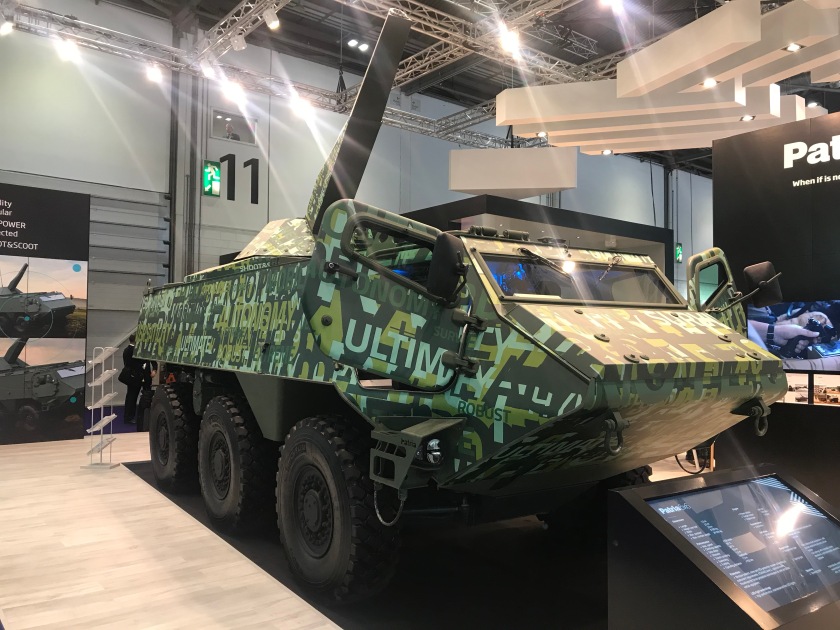
The second missing variant is a dedicated mortar vehicle. Given the speed with which 8×8 formations move (up to 1,000 kilometres in 24 hours) and the limited 5,000 metre range of our existing 81 mm mortars, there is a risk of out-running our fire support assets. For this reason, a 120 mm mortar is now needed. If we were to acquire a Boxer equipped with Patria’s NEMO 120 mm breech-loaded mortar (which also has a direct fire capability) we would not only have significantly increased range and firepower, we would only need six vehicles per mortar platoon, instead of eight, reducing manpower requirements and operating costs. Given that NEMO is fired from a turret under armour, it provides significantly greater protection than a mortar firing through an open roof. It also has health and safety benefits in terms of operators no longer being adjacent to the mortar tube when it fires, which presently limits our 81 mm mortars to Charge 3.

Another missing variant is a 155 mm howitzer. Some within industry have suggested that the UK should acquire a gun-on-a-truck (GOAT) like Caesar or Archer. There is no doubt that these offer increased utility versus towed artillery systems, such as the M777, but we need a self-propelled howitzer that can keep pace with Boxer infantry battalions. Why do artillery units need to keep pace with infantry? For A2/ AD missions, where Strike Brigades conduct raids to neutralise such things as enemy air defence systems, infantry will be used to protect artillery while units manoeuvres to within shooting range of the desired targets. KMW has developed a Boxer 155 mm L/52 self-propelled artillery mission module, the RCH155. This is utilises the Boxer’s proven driveline, but also the same proven Rheinmetall cannon and autoloader that are used in the PzH. 2000. It carries 40 ready rounds of ammunition plus 140 charges.[5]Although the RCH155 is expensive, it is no more so than a new tracked self-propelled gun. AT DSEI 2019, KMW displayed a model of their revised RCH155, which has a more compact turret and can fire without stabilisers across a 360 degree arc. It gets into action within 20 seconds, fires up to eight rounds in a minute, and can then move positions within a further 20 seconds. No GOAT can do likewise. No GOAT has the same level of protection. In a world where artillery is acquired as soon as it has fired, the ability to ‘shoot and scoot’ is essential to battlefield survivability.

In terms of raiding, further Boxer artillery variants equipped with ground-launched Brimstone or Spear, providing a 40-50 kilometre NLOS precision capability against a range of targets would complement a 155 mm area capability. Furthermore, mounting HIMARS on a Boxer module with a mix MLRS/ GMLRS rockets and a Deep Fires missile with a 499-kilometre range, would be equally devastating. Strike units would manoeuvre to an engagement point, neutralise their targets, and then fight their way out of contact. Assuming a Strike Brigade could effectively destroy enemy GBAD units, this would theoretically facilitate air superiority or parity, enabling large-scale destruction of enemy armour from the air.
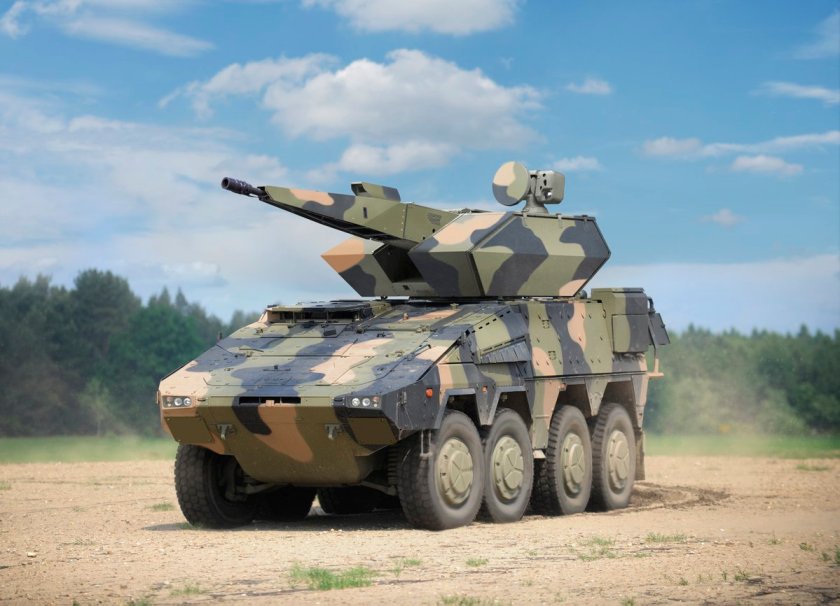

Ground-Based Air Defence is further area that merits consideration. The existing Stormer CVR(T)-based air defence vehicles equipped with Starstreak HVM are obsolete, like Bulldog. Therefore, there is a need to mount the same missile system on a new platform. One option is to acquire a Boxer mission module with a 35×228 mm anti-aircraft cannon, such as the Oerlikon Revolver gun Mk 3. This has advanced air burst ammunition with a 35 mm projectile that fragments to form a cone-shaped cloud of tungsten pellets. These decimate incoming missiles, aircraft and drones. Alternatively, the 20×102 mm Phalanx CIWS used by the Royal Navy could also be used. Phalanx ammunition doesn’t fragment, making pinpoint accuracy harder to achieve even though it has a higher rate of fire than the Oerlikon system.
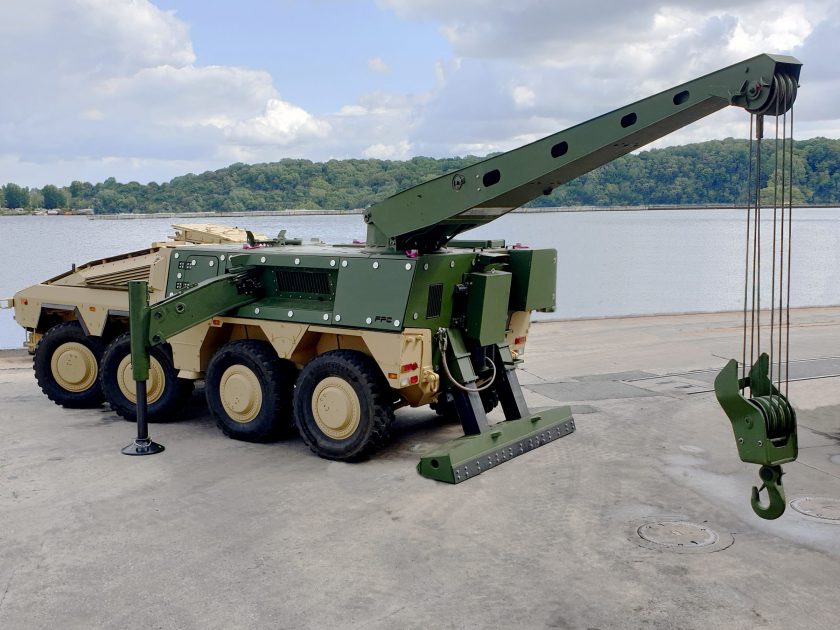
With a mission module approach, the possibilities are endless. The German heavy engineering firm, FFG, recently invested in a Boxer Recovery Module.[6]This can swap mission modules in the field as well as changing power packs, dramatically improving forward support of the fleet when deployed. A common platform able to accept multiple module types means that Strike Brigades can be configured and re-configured according to the mission at hand. By having more mission modules than driveline modules, you reduce the cost of the whole capability set. If we need to add new weapons or other systems, we can simply acquire new modules and fit them to our existing fleet. Finally, when the Boxer driveline module is re-engineered to incorporate new technology, e.g. hybrid electric drives, we will be able to attach our existing mission modules to the revised driveline, further reducing system lifecycle costs.

05. A high quality, low-risk acquisition
Should any unforeseen situation require Britain to deploy the Army in an emergency, Boxer will enable it to generate a highly mobile, high-impact force quickly and efficiently. Boxer can self-deploy by road. It can be carried by an Airbus A400M. Or an entire brigade of Boxers can be transported by sea via Littoral Strike Ships or RoRo ferries. When boots are deployed on the ground the very nature of warfare means they are exposed to significant life-threatening risks. Regardless of mission, it is totally appropriate that they should be given a vehicle that offers the highest possible level of protection – especially since Army personnel have borne the brunt of casualties suffered by UK Armed Forces during recent deployments. No armoured vehicle can offer complete protection against kinetic or blast threats, but the increased survivability offered by Boxer will do much to reduce the hazards, ensuring our troops return home safely. For all these reasons, Boxer will be a massive win for the Army, but equally for the Government that supports its introduction.
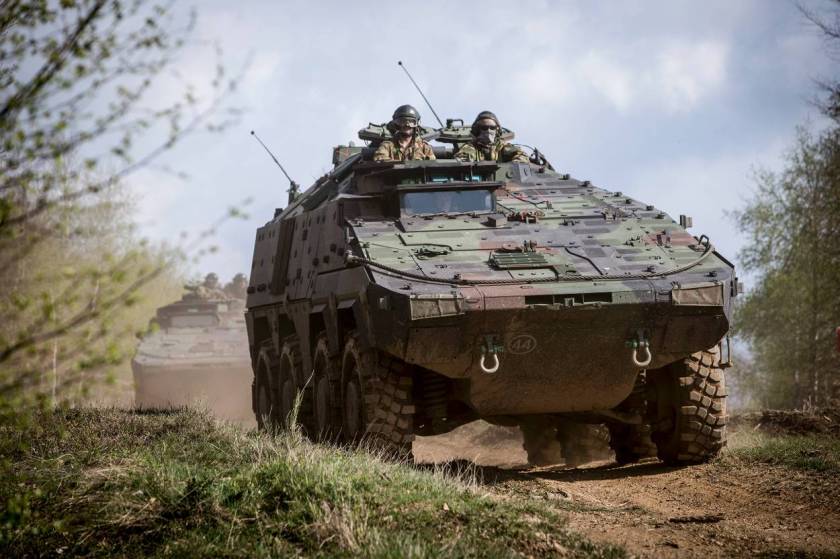

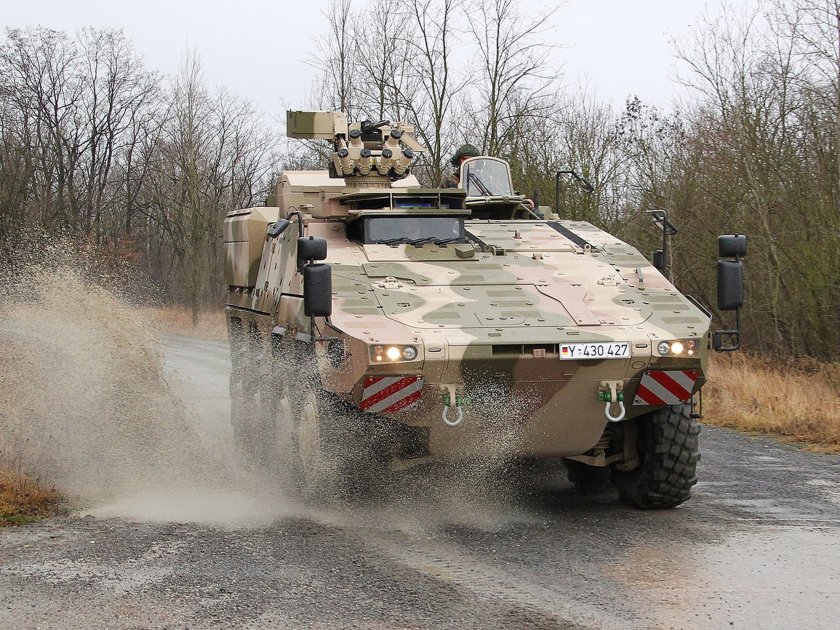
Great article many thanks. Just a few things that I would like to add.
1. Why skyranger when Rapidfire is equipped with 40mm cta and starstreak?
2. Archer GOAT can be up and running in seconds and redeploy in seconds plus MAN trucks have high mobility. Not saying it is better just maybe cheaper allowing funds for purchase of brimstone system for example BTW I think would be crucial for firepower
3. The possibility of the continued inclusion of 0.5 hmg is deeply concerning as it simply doesn’t have the firepower and the m230lf shouldn’t be a hope but a minimum
4. I really hope consideration is given to MOOG RiWS rather than kongsberg as this system would give ultimate flexibility and overmatch. If hmg was the baseline it could easily be swapped with 230lf. Plus additional systems such as javelin & potentially LMM could be fitted.
LikeLike
Ah, beat me to it.
Yes, what about Thales Rapidfire? Continues investment in CTAS40 and has Starstreak (and so martlet) ready to go.
No integrated radar is problematic but not insurmountable I’m sure, or could/should it takes its cue from Land Cepters’ systems.
LikeLike
Thales have the ground master series which include both long and short ranged mobile radars, this would be a great capability for strike as would Giraffe AMB on Boxer (in service with Sky Sabre?) Perhaps also giraffe 1x that can be used on the move. There’s a possibility the RiWS could be used for SHORAD I think it is used in the Stryker interim system. I also wonder if CAMM could be deployed from the mdba indirect fires boxer module?
LikeLike
Thanks Nicholas, who is hoping for the 30mm chain gun, you or the army?
LikeLike
Both of us!
LikeLiked by 1 person
I’m sorry to always repeat the same thing, but the Strike Brigades have what job? I understand the need for troop protection, but there you spend a fortune on a limited number of vehicles, with specifications like the Artillery Boxer whose support could be a cheaper platform for purchase and use.
For me you do two kinds of heavy brigades, one on wheels without battle tanks, and the other on vehicles tracked with tank, but without real differences. While if you use lighter vehicles, you could buy more.
I know the MRV-P program, it will give you lighter vehicles, but between the very heavy and the light you will have nothing. It’s not that I want the British Army to buy 25-ton vehicles, but financially affordable vehicles for differentiated missions, high intensity, asymmetric warfare, peacekeeping, airborne.
LikeLike
Really interesting.
However when you say that 8×8 wheeler carriers have the ‘tactical mobility to go anywhere a tracked IFV can’ it does rather beg the question as to why nations are renewing their fleets of tracked vehicles. Do tracked vehicles perhaps have greater (albeit specialist) utility than you’re giving them credit for?
LikeLike
I agree with Simon m that this is a great article, one which shows so much detailed knowledge.
However, there are some questions I would still like to ask. :
i) Nicholas, you have listed the four variants the Army plans to acquire (Infantry Carrier Vehicle, Specialist Vehicle, Command Vehicle, and Ambulance). I am sure, however, that I read somewhere that there was also an engineer version planned because the writer was congratulating the Sappers on fighting their corner effectively. Do you know anything about this?
ii) You mention that KMW has developed a Boxer 155 mm L/52 self-propelled artillery mission module, the RCH155. You go on to say that at DSEI 2019, “KMW displayed a model of their revised RCH155, which has a more compact turret.” Would the more compact turret mean a lower vehicle because one of the criticisms of the original vehicle (by two academic pundits from RUSI) was that it was quite a high vehicle and that that would probably mean that it would be hindered by obstacles such as trees in forest areas.
iii) I wonder why the possibility of a direct fire 120mm weapon has not been mentioned (apart from a direct fire version of the 120 mm mortar). If the Boxer vehicle can be the basis for 155mm gun, I suppose it could very well support a direct fire 120mm weapon. Presumably the hull, chassis and suspension could withstand the stresses imposed by the firing of such a weapon? Having said that, I think that the 120mm mortar might be a better bet for Strike Brigades.
LikeLike
Very good article indeed, although I disagree with the chapter about artillery. RCH 155 carries 30 rounds and not 40. More importantly 52 Cal involves building up ammunition stockpiles, and modular charges, not to mention guided munitions and antitank 155 munitions. Coming from 39 cal to 52 Cal involves a major investment in ammunitions.
The increase in range of 155 and M270 ammo means that the artillery will need longer range ISTAR assets, Tactical UAVs, longer range CB radars (100 km ish), with high accuracy, long range artillery accuracy compatible EW assets. Lonuer range artillery involves a major investment in ISTAR assets. This seems to me much more important for the artillery than having a chassis common with infantry vehicles, for tactical purposes (the longer the range, for artillery platforms, the less necessary it seems to have armoured chassis), for LOG purposses (why buy a chassis 3 times the price as the competitor’s to do savings worth only a fraction of that ?).
Basically RCH comes out of action 10 seconds faster than its competitors, is it worth spending twice as much ? Artillery capability means a coherent investment, including rocket lounchers, 155 platforms, ammunitions for both, ISTAR assets for both (and ISTAR platforms are hugely expansive) ….can we afford all at a time or would we have to wait for another 10 years for the ammunitions ? Not to mention the fact that instead of having 100 odd 155, at 8 million pounds apiece we will get only 40.
LikeLike
Great article. I see how you would structure an universal infantry battalion, but can you show how you would incorporate all the new systems you mention into a Boxer battalion, division etc?
LikeLike
Nicolas,
Do you think there would be any political/PR benefit in allowing other civil agencies to build their own modules, on the promise of the loan of vehicles and drivers when needed? I’m thinking for fire-fighting and other emergency response modules.
I appreciate that whilst they won’t need the protection, the ability of the 8×8 to carry tonnes of water and pumps, etc. virtually anywhere must be of great civil benefit.
I’m sure that the Army could find some drivers and AFV commanders at short notice to man the vehicles and deploy in most areas of the country within 24hrs.
LikeLiked by 1 person
That is a brilliant idea! Why don’t you write an article on it? You could suggest a range of civilian modules that might have utility. The obvious ones that spring to mind are rescue / fire-fighting, ambulance, logistics carrier, bridgelayer, and police / riot control.
LikeLike
I could also see a base shelter module where the module “unfolds”, similar to some models of ISO based field shelters, which would be good for any number of uses. Not having to be armored, or having to stay within basic vehicle envelope gives you a lot of leeway to try things out.
LikeLike
Nicely thinking outside the box. I think your concept is sound.
However, being a retired Copper I think it’s unlikely that the police would be interested in deployment of anything that big or warlike. The Met came in for massive criticism when the opted for the Jankel Guardian armoured multi role vehicle (based on a US Ford F150j for protected firearms incidents and public order duties as it looked too much like a military vehicle.
https://www.mirror.co.uk/news/uk-news/blast-bullet-resistant-armoured-cop-10093999
After the riots of 2011 some forces bought refurbished Snatch Land-rovers for a similar role.
More recently a number of forces, including Civil Nuclear constabulary have acquired the Oviks Crossway for Firearms response.
It’s all a matter of image. I would be interested to see that the Met replace the Jankel with as most are 15 years old and I doubt they comply with Mayors London Low emission zone.
LikeLike
Wouldnt such a fire truck option be great for Australia? Esp if it can tow a couple trailers full of water, road train style. As for not needing protection – if the Boxer is as fire resistant as I think it is, that should be a great plus, as you could drive into more dangerous areas of an approaching bush fire without the risk of being cut off by a suddenly advancing fire.
Esp since it already has a NBC protection installed.
Might want to add some oxygen reserve for the crew, in case the fire around it consumes all the oxygen in the air.
LikeLike
Agree with the article, it has always been a bone of contention over the current structure of the strike brigade. This is especially true where there is a proposed mix of tracked Ajax and wheeled vehicles. Which always starts of with the question will the Ajax be able to keep up with the Boxer, or will the Boxer be expected to wait around whilst the Ajax catches up.
The Strike Brigades need to be modelled preferably all on one vehicle. This will help massively especially LAD support, who will only need one set of vehicle spares. The strike brigade vehicles will break down at some point, it’s inevitable, so it makes sense to concentrate on one or two sets of spares. So along with the Boxer, the Man trucks will still be needed , unless they propose using the Boxer for a supply role
However, to be a fully coherent brigade in needs to be self-supporting. Some additional Boxer variants have already been mentioned such as the recovery vehicle and the bridge layer. But there will also be the requirement for a combat support vehicle. Armed with the CTAS 40mm and Javelin or Spike ATGW. We have been waiting a long time for a 120mm mortar, it is long overdue. If we could have an automated one that can also do direct fire so it can take out bunkers – yes please.
The Land Ceptor SAM system is a step change compared to Rapier and can provide local area defence. But it needs time to set up, so a SPAAG would be a very good option that can protect a convoy whilst travelling, but the gun needs to be backed up with its own missiles, basically a UK version of Pantsir. The Starstreak missile is still a good choice, but it needs to evolve so that it can attack multiple targets simultaneously.
When MBDA release the prototype of a vehicle mounted with Brimestone, I though t what a brilliant idea. We know that when being used by the RAF it has had a reported 95% success rate. The weapon is now multipurpose and with the development of Spear3 even better, as this missile can now loiter over a targeted area. It woulld make perfect sense to have a module equipped with Brimestone/Spear3 that can be used as a direct fire support vehicle or a dedicated anti-tank hunter.
I have to laugh at the RUSI comments on the height of the vehicle if fitted with the RCH155 module. They do realise how tall the Boxer or any 8×8 vehicles are these days. This is all down to the necessity of using a V hull. By placing a compartment on the V it will naturally be taller. If you have ever stood next to a spammed up Stryker, you feel immediately small. They are head and shoulders taller than the Chally. Will the RCH turret really make that much difference to the vehicle and how it operates?
I do know from experience of being with the US Army in Iraq that when it rained, the Strykers struggled and would often need a tow by tracked vehicles after being grounded. I’ve yet to hear how these would operate in the snow, but the Canadians have used their LAVs for years.
LikeLike
I do hope we don’t witness wholesale disposal of Mastiff and associated vehicles. The Boxer may replace some of these former heavy vehicles, but can they offer the same heavy protection? With the British Army believing the MBT’s usefulness is now limited, and will only field two regiments in the future, our lads and lasses need vehicles capable of withstanding heavy fire and IED’s.
LikeLike
Boxer offers better protection than Mastiff.
LikeLike
Why don’t I believe that, though I’m not doubting your opinion, just the Boxer ‘speak’ may be misleading?
LikeLike
Reading the ATTV piece got me thinking:
Are there any plans afoot by Rheinmetall, or anyone else, to build a common tracked platform that would accept the Boxer mission modules?
The savings in logistics and to a greater extent training, would be huge. For example, re-tasking a unit from wheels to tracks would probably just require their driver to re-train (2 weeks?), or even quicker, swap out drivers.
Or is there something fundamental to the modules on Boxer that exclude use on a tracked platform?
Also, on a real tangent, as most weapon systems will be remotely controlled via screens, are there virtual-reality training simulators being developed to plug in for in-camp training, and augmented-reality simulators being developed for field training? If my nephew can chase pokemon around town using his iPhone, surely we have the technology to launch virtual-Javelins at virtual T-72s on Salisbury Plain. The training value of running scenarios whilst the modules sit on their storage cradles in a barn could only be a good thing.
LikeLike
I think considering we struggle to give enough infantry brigades protected mobility if not costly retention of mastiff & other UOR vehicles would be prudent especially for defence engagement & peacekeeping ops.
Whilst I can believed Boxer has outstanding mobility in most conditions.
I have seen German vehicles struggling in the snow & I can’t see how it would cope with extremely muddy conditions considering the little likelihood of an MBT being wheeled plus strides being made with composite rubber tracks I really think FV432 should be replaced by a tracked solution such as ffg G5 PMMC or as monkey biker suggests maybe an opportunity for RBSL is to design a tracked Boxer equivalent this could be eventual replace for warrior as well
LikeLike